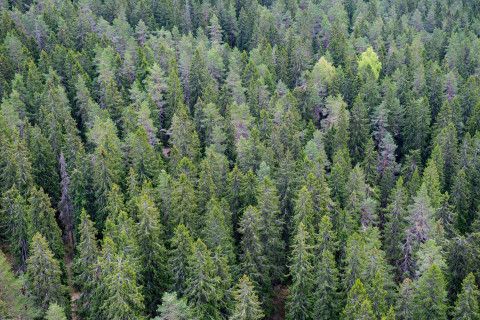Sustainable use of forests and biodiversity preservation have long-term and widespread consequences for the future of our planet. What is the optimal amount of logging, will we discover new drugs from mushrooms, and how can we replace fossil fuels in a manner that is not only sustainable, but also economically profitable? We need diverse, research-based knowledge to support these major decisions in order to stay on the right track to preserve our unique habitat.
“The Forests, Global Change and Bioeconomy research area focuses on the effects of forest management, forest use and climate change on the carbon dynamics, structure and ecosystem services of forests, such as the production of forest biomass, biodiversity, forest carbon sequestration and recreational use,” says Professor Heli Peltola from the School of Forest Sciences.
“We also study the needs for adjustment in forest management in a changing operating environment, which is influenced by phenomena such as the diversification of forestry and the bioeconomy, and climate change. It is possible to mitigate climate change and biodiversity depletion through adjustments in forest management and forest use.”
The University of Eastern Finland’s multidisciplinary research in this area is internationally recognised for its extremely high scientific level and societal relevance, and the research approaches used encompass experimental research, modelling and simulation.
“For example, our research groups are currently studying the responses and adaptation mechanisms of trees and other forest and peatland vegetation to changes in environmental factors, the carbon dynamics of forest and peatland ecosystems, and the effects of forest management, logging intensity and climate change on various ecosystem services. These include wood production, biodiversity and forest carbon sequestration,” Peltola explains.
“We are also developing forest ecosystem and risk modelling, life cycle analysis, forest planning optimisation systems and systems supporting decision-making. Furthermore, our research benefits from laser scanning data and geographic information systems.”
Sustainable forest use needs to consider not only wood production, but also other ecosystem services, such as forest carbon sequestration, biodiversity preservation, and recreational forest use.
“We utilise data relating to both forest resources and the climate when simulating the development of wood production and forest resources. Laser scanning and satellite data are diversely used in forest research already now, but as methods for the interpretation of various data evolve, I believe we can use them even more efficiently,” Peltola adds.
“The bioeconomy, on the other hand, refers to more than the mere use of forests and natural resources; it also includes the idea of their preservation and supporting sustainability in their use. In the forest-based bioeconomy, this also includes the water economy, in which forest use and structure play an important role – including the economic and eco-social dimensions,” says Senior Researcher Sari Pitkänen, who coordinates the Bioeconomy Policy of the University of Eastern Finland.
“The bioeconomy is an extremely large entity covering both material and immaterial benefits and services. It also involves the recognition of nature’s value as such.”
“In the field of the forest-based bioeconomy, the university has significant collaboration with the Natural Resources Institute Finland, the European Forest Institute, the Finnish Environment Institute, and the Finnish Meteorological Institute. This kind of multidisciplinary collaboration is something we need to engage in also in the future in order to solve global research challenges,” Peltola says.



